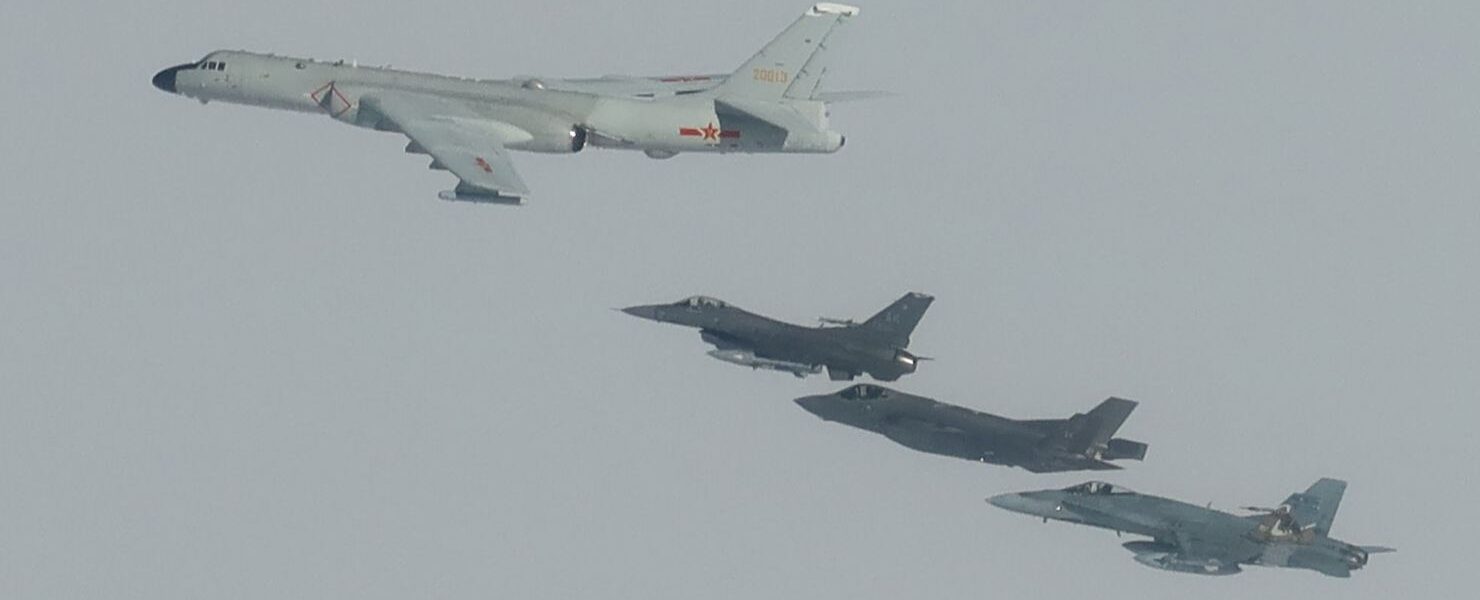Introduction
While Washington, D.C. focused on its own political developments yesterday, a notable military event unfolded at the opposite end of the country. The United States was compelled to scramble jets in response to a significant joint air exercise conducted by China and Russia near Alaska, involving nuclear-capable bombers and a display of strategic power.
Incident Overview
The situation unfolded when four nuclear-capable bombers—two Russian Tu-95s and two Chinese H-6s—entered the US Air Defense Identification Zone (ADIZ). These bombers were escorted by Su-30, Su-35, and SMS aircraft, indicating a coordinated training operation between the Russian and Chinese air forces. A video released by the Russian Defense Ministry showed one of the Russian bombers being refueled mid-air, a standard practice for extended flights.
NORAD’s Response
The North American Aerospace Defense Command (NORAD), responsible for monitoring the airspace around Alaska, detected the foreign aircraft entering the ADIZ. Although entering the ADIZ is not illegal, it requires notification to the US. In response, NORAD scrambled F-16s and F-35s from the US and F-18s from Canada to intercept and escort the foreign bombers. The footage from Russia displayed Western aircraft closely shadowing the Russian and Chinese planes, signaling a show of readiness and vigilance.
Official Statements
NORAD released a statement clarifying that the Russian and Chinese aircraft remained within international airspace and did not enter American or Canadian sovereign territories. The command stated that the activity was not seen as an immediate threat but reaffirmed its commitment to monitoring such operations. The policy of “meeting presence with presence” was emphasized, demonstrating that the US was actively engaged and prepared.
Historical Context
This event is part of a recurring pattern of military maneuvers between Russia and the US. Russia has previously conducted similar operations near the Alaskan ADIZ, with notable incursions in May and February. The participation of China in this latest exercise adds a new dimension to the strategic interactions between these countries.
China’s Position
China sought to downplay the incident, framing the deployment of nuclear-capable bombers as part of routine military training and consistent with international practices. Beijing emphasized that the exercise was not directed at any specific nation and was a standard element of their military operations.
Strategic Implications
The joint air exercise by China and Russia near Alaska underscores the growing strategic rivalry and military competition in the Pacific and Arctic regions. The involvement of Chinese bombers introduces a new level of complexity and challenge to US defense strategies. The incident highlights the evolving nature of global military dynamics and the need for strategic responses.
Conclusion
The joint operation by China and Russia near Alaska represents a significant escalation in the strategic competition between these nations and the US. As both China and Russia continue to engage in high-profile military maneuvers, the US’s response will play a crucial role in shaping future defense strategies and maintaining stability in international airspace. This incident underscores the increasing complexity of global military relations and the importance of maintaining a vigilant and strategic approach.






